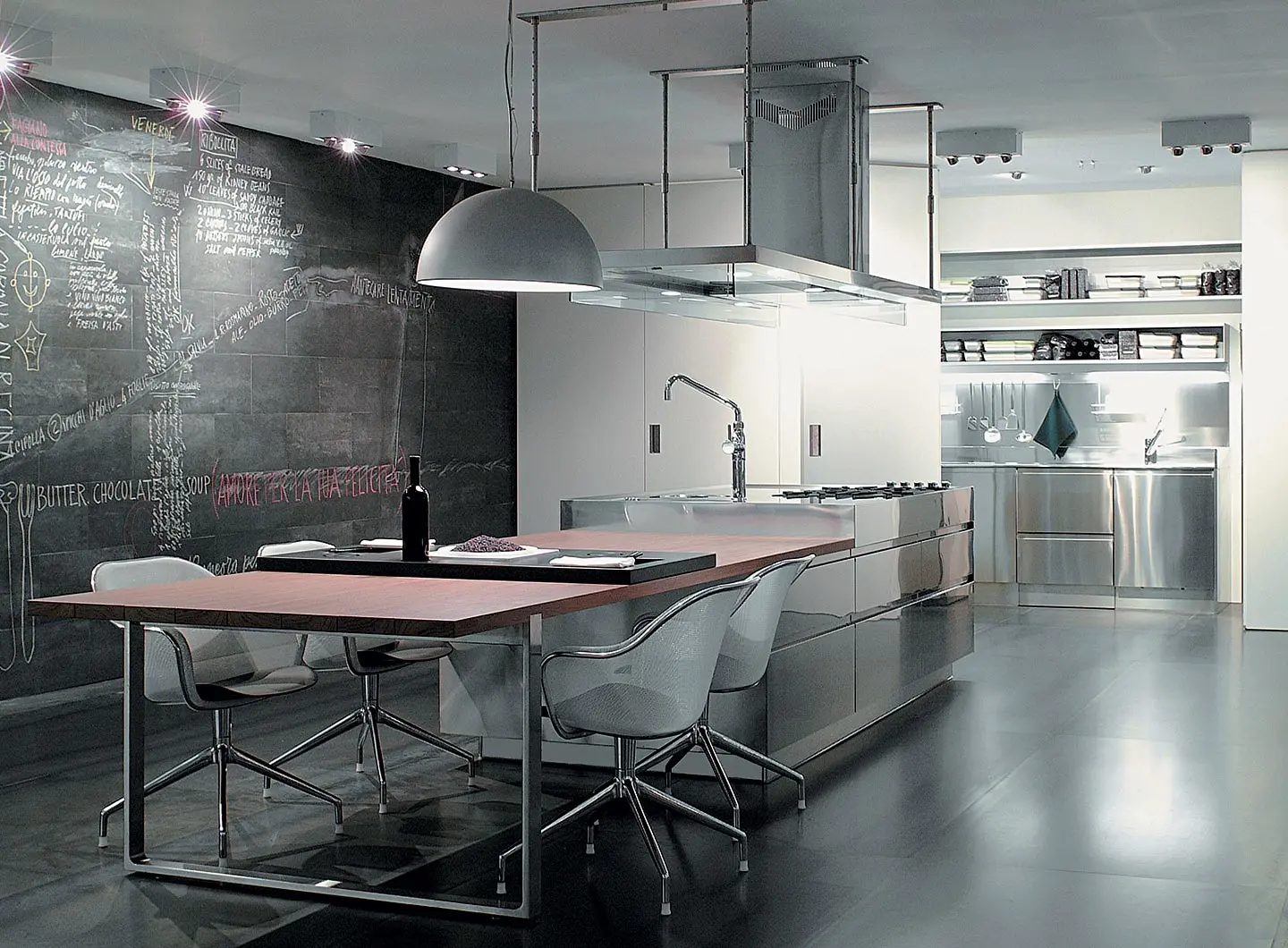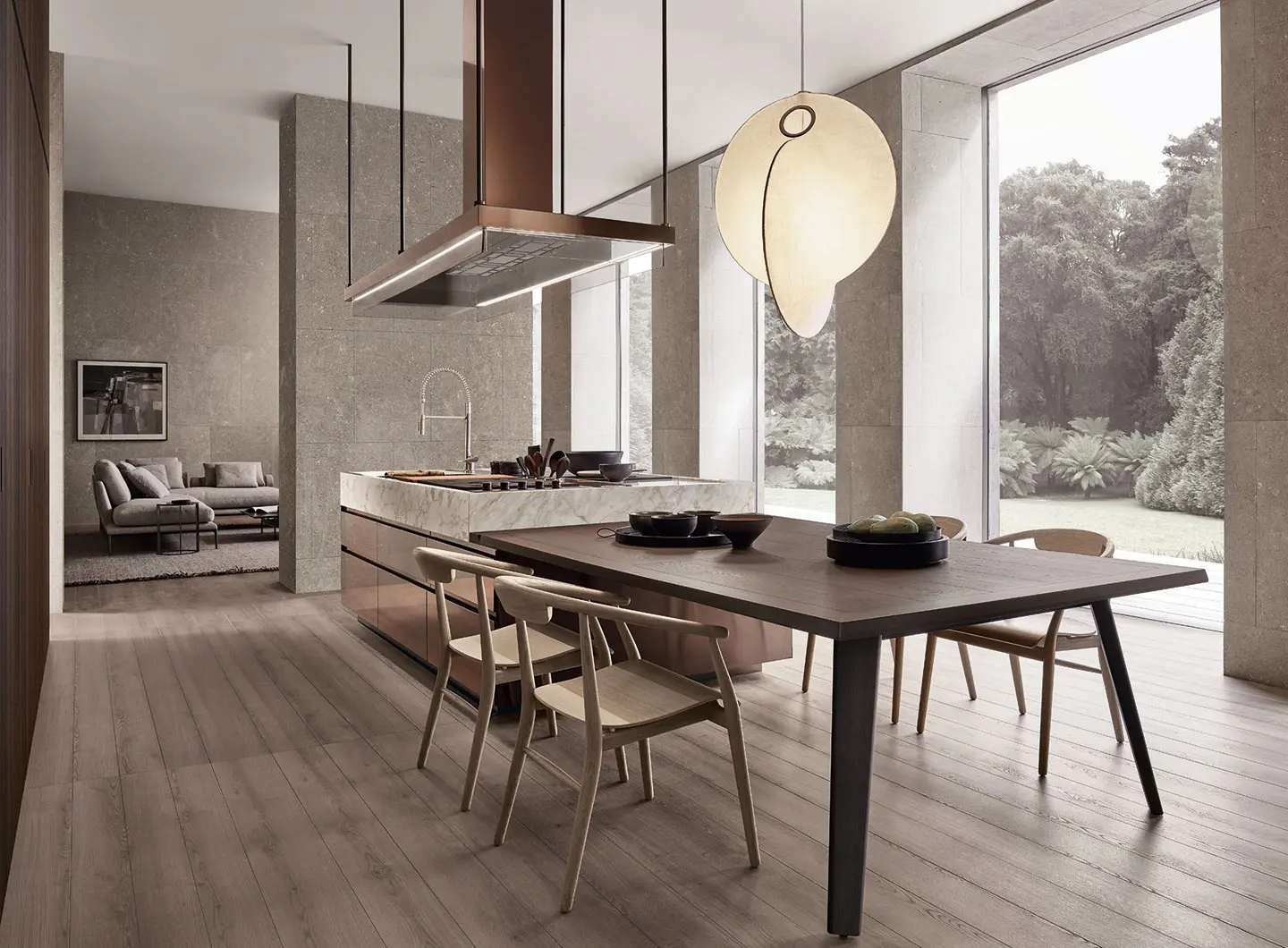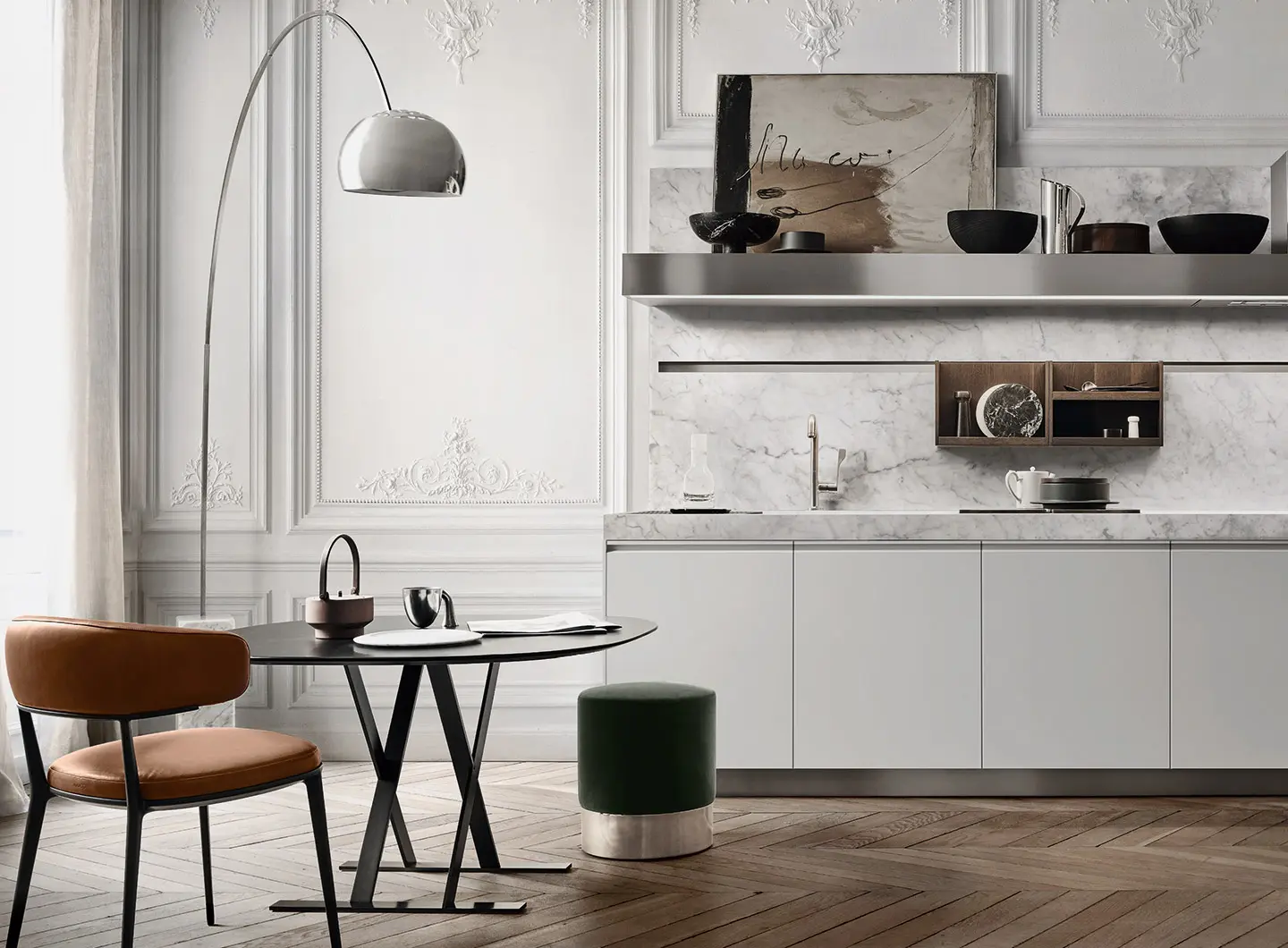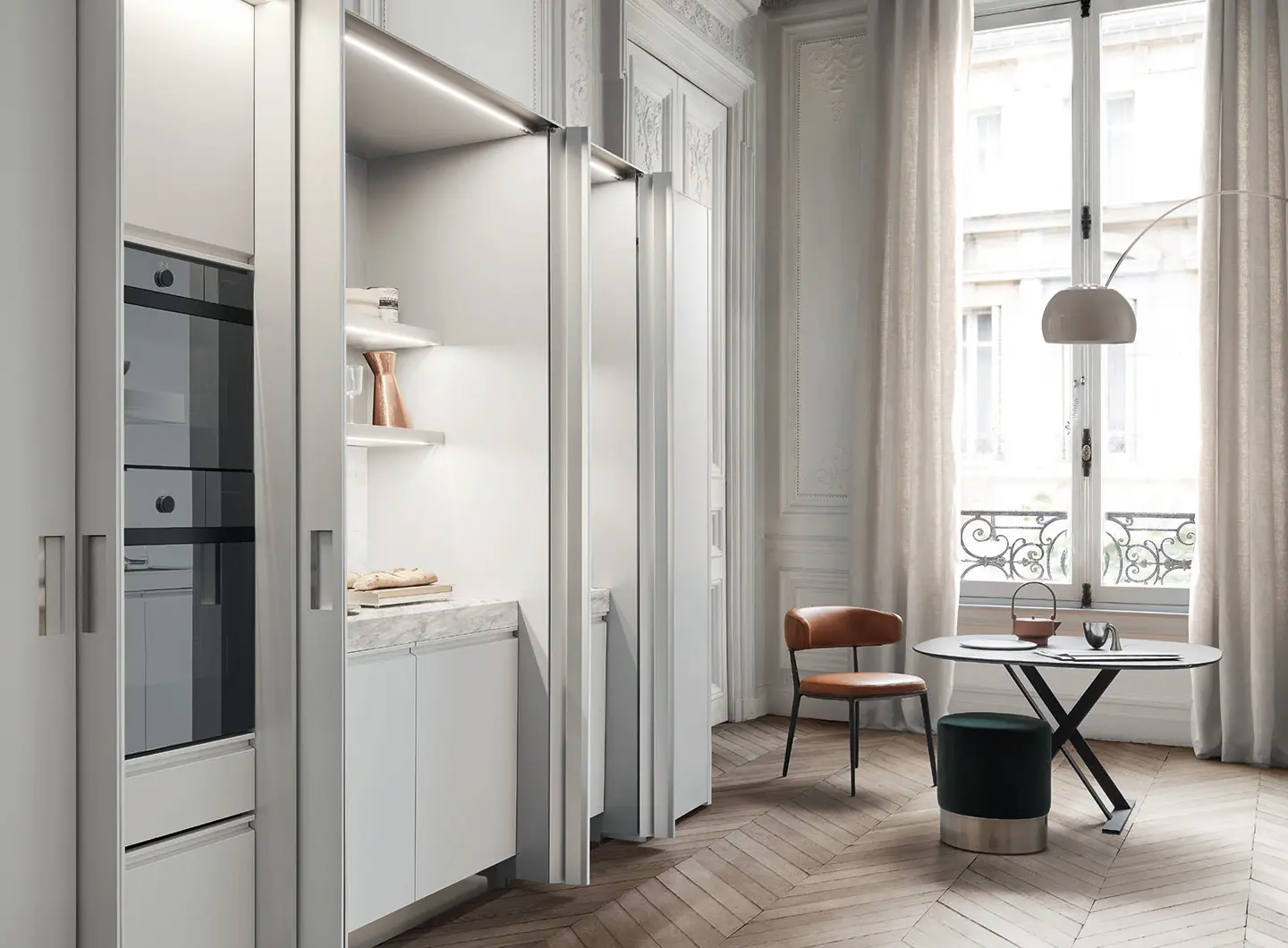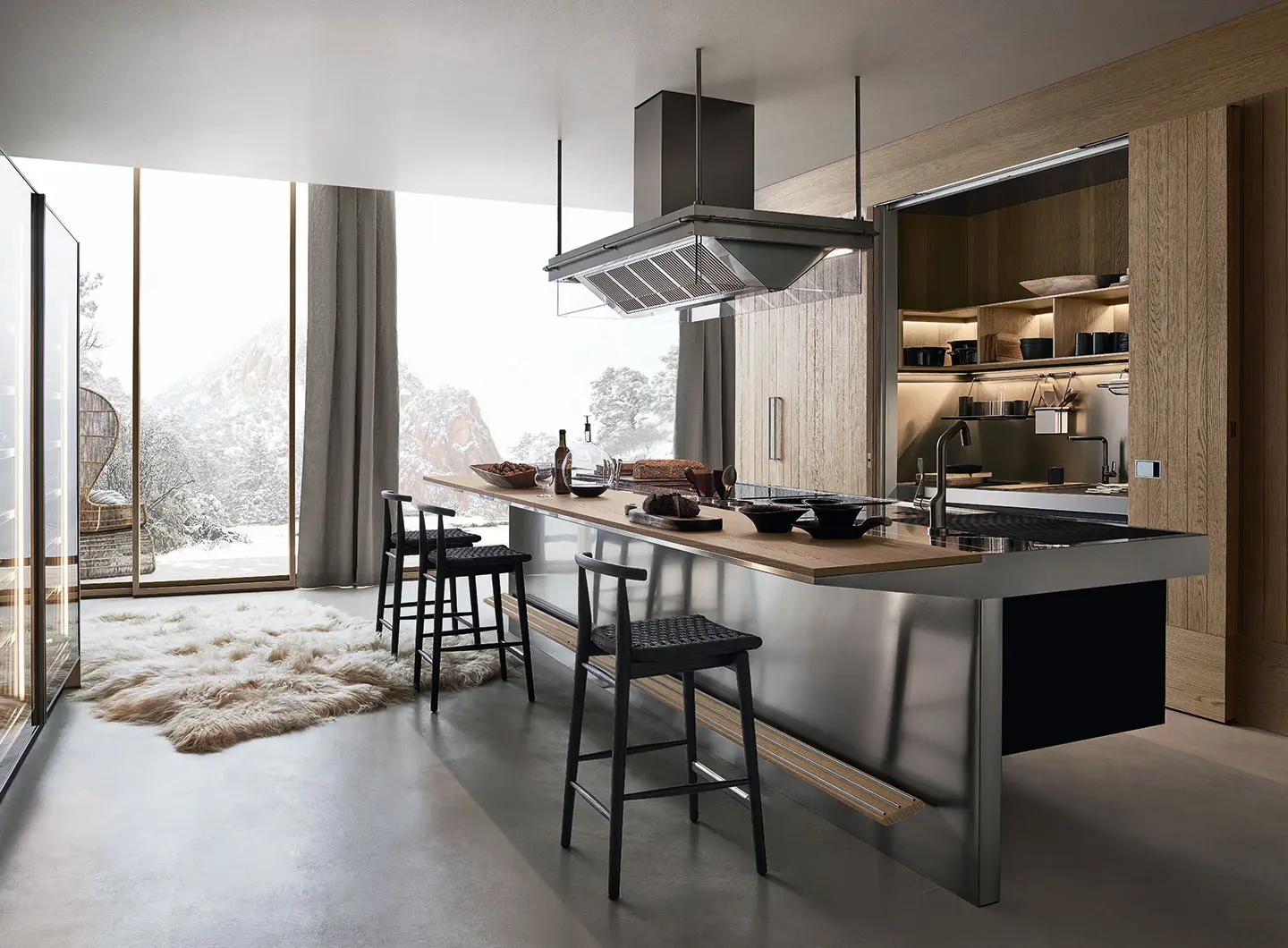From BIG to David Chipperfield, Frank Gehry to Snøhetta: a world tour of the best buildings set to open in 2026
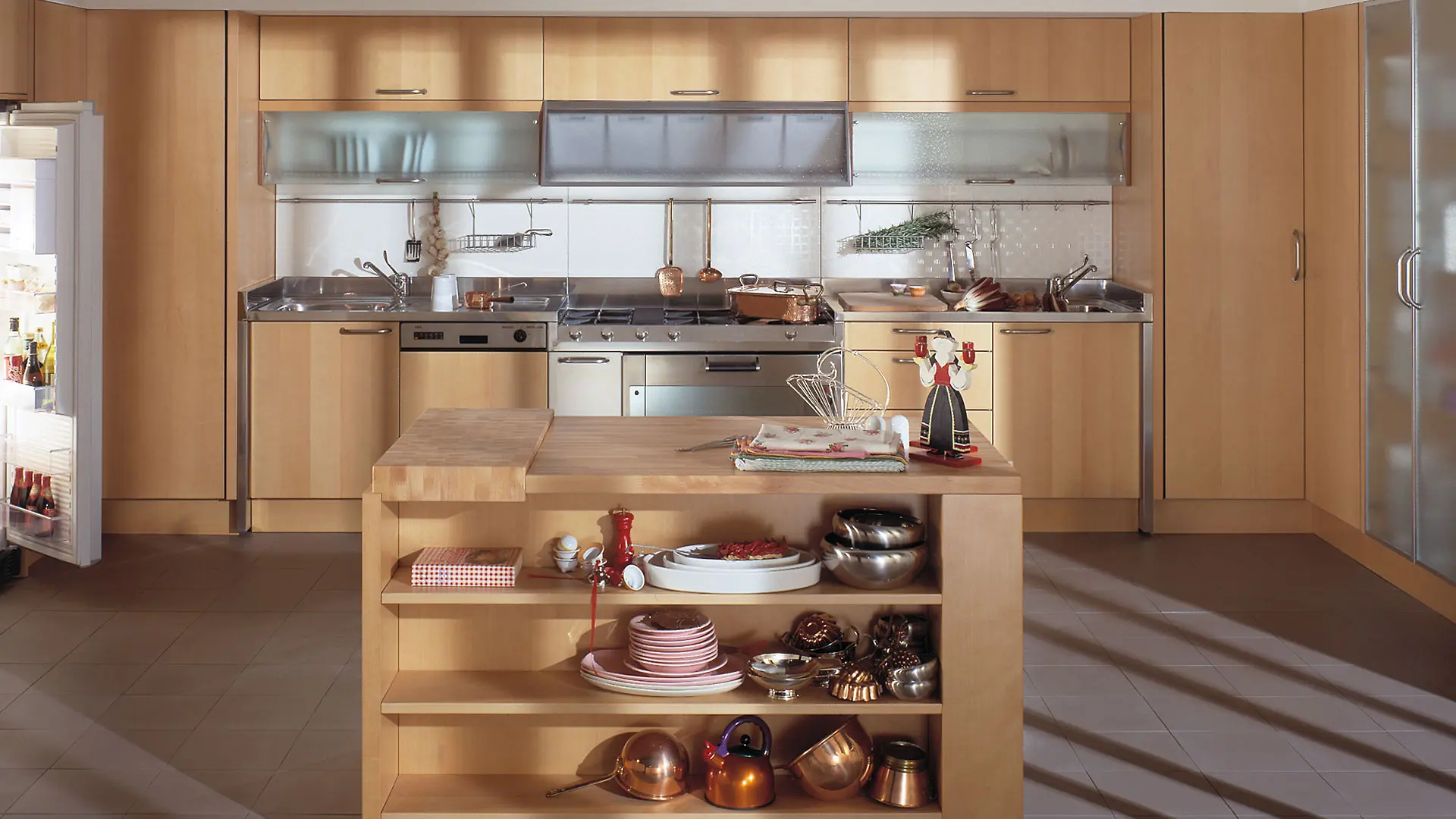
Italia, design by Antonio Citterio, 1988
It has has weathered epochs and social revolutions since 1925. The kitchen continues to be the heart of the home, in Italy and elsewhere.
The kitchen is the hub of the domestic space, the place towards which the entire family geography, made up of affections and the daily pleasure of sharing gestures, scents and flavours has always gravitated. It’s a complex and compelling place, in which experience and creativity, form and functions chime wonderfully. A place that, for Arclinea, is the upshot of passion, experience, skill, quality, regionality and ethics, values that define the identity of the company born almost 100 years ago in 1925, when Silvio Fortuna Senior (who had lived at his parents’ trattoria up till then) reopened the traditional carpentry shop set up by his great-grandfather in 1816, which closed during the Great War. Twenty-five years on, after the Second World War, as the market changed radically fuelling demand for wood furnishing, the Fortuna joinery was already in possession of all the skills needed to respond to the demands of a new type of consumer.
His children Angelo, Almerino and Lena joined the company during the early Fifties. Their job was to lift the company out of the craft sector and into mass production. The first modular natural wood kitchen, Thea, came out in 1958. It was extremely striking and a far cry from the enamelled metal modern kitchens. Things really took off in 1960. To underscore its importance, the firm was re-branded (as it would be called today) as Arclinea, in which “Arc” is an acronym of “arredamenti razionali componibili” [rational modular furniture]. Claudia, the first kitchen to boast built-in appliances and a steel hob, overcoming the formal dichotomy between appliance and furniture and the problem of blending the practical with the aesthetically-pleasing, was presented at the Salone del Mobile di Milano in 1963. This solution also heralded a new way of conceiving this particular space which, from then on became a brand constant: the kitchen as a functional and efficient space, but also a good-looking one, to be lived in at any time of day, all year round, taking over from the successful kitchen-diner combo of the time, in which space and layout were split between functionality and liveability.
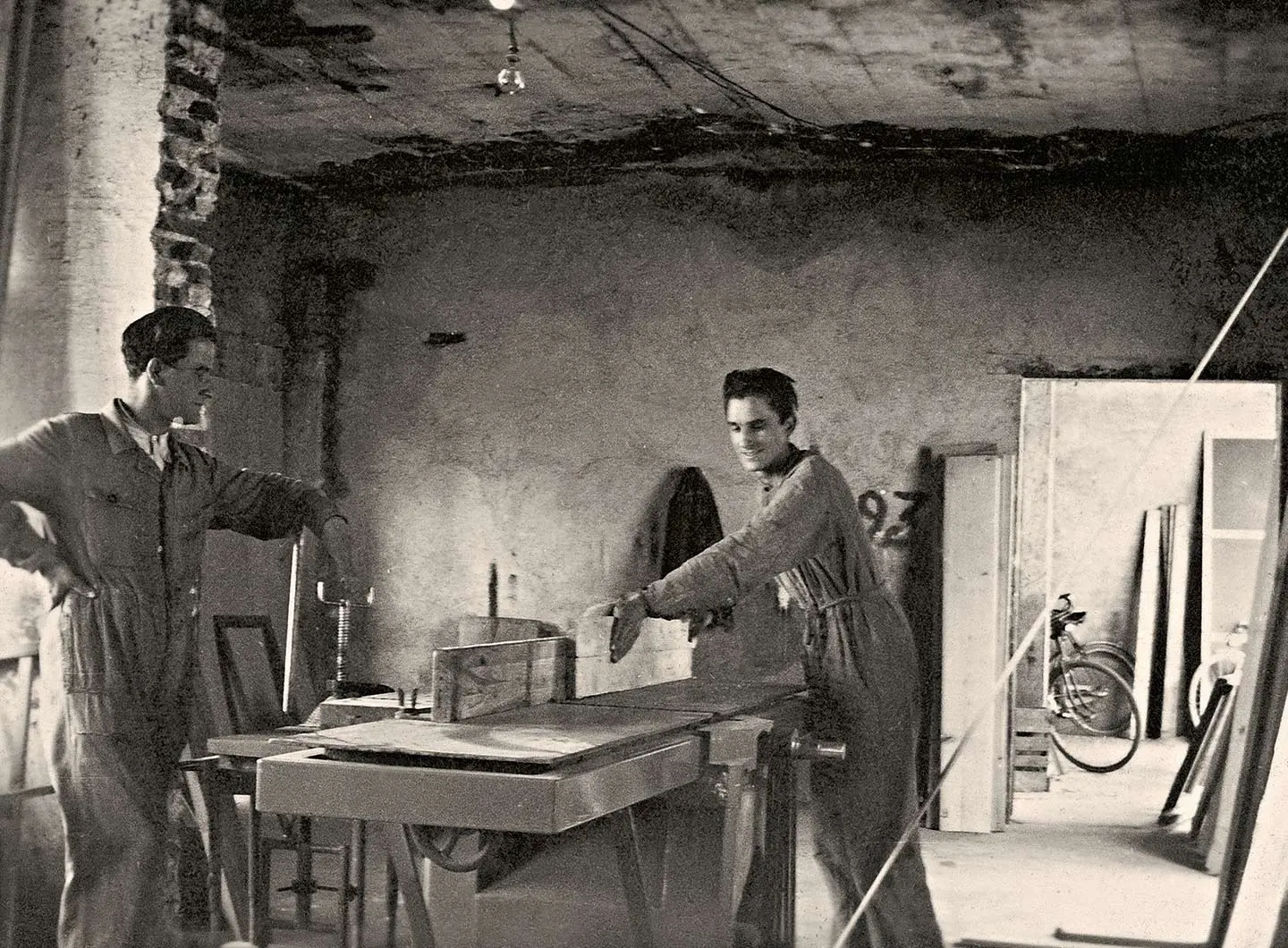
At work in the Fortuna carpentry, 1943
While the previous decade had seen the company lay the foundations for expansion, during the Seventies Arclinea continued to hone its identity, keeping a close eye on evolving social and cultural changes and determined to produce kitchens tailored to the latest demands, in a brave and pioneering conceptual approach that allowed it to help redraw the aesthetic and practical canons for this particular space. Thus the Gamma30 project brought with it greater freedom in terms of size and looks, thanks to its extreme modularity and handle-free doors, paving the way for a new trend channelling simplicity and formal purity. A symbol of lightness and elegance, the handle-free kitchen proved such a success for the brand that it became a spur for further formal, substantial and ongoing research.
The Eighties saw the arrival of the third generation of children and grandchildren, Silvio, Walter, Marillina and Gianni, who, once the new factory had been built, decided to broaden the company’s horizons by making approaches to the design world, first talking to architects and designers and then consolidating the company’s relationship with Antonio Citterio, who became its leading designer in around the late Nineties. The need to overcome all the technical problems in as rigorous and practical a way as possible in order to produce increasingly creative, customised and liveable kitchens fuelled the creation of innovative products. Citterio’s first project in 1988, Italia, was truly revolutionary, because it introduced professional catering standards into the home, with the accent on steel, together with more spacious worktops, large dedicated sinks for preparing food and washing pots and pans and a central, lowered cooking area. Italia, Mediterranea, Florida, Ginger and Artusi all saw the light of day during the first 10 years of the collaboration between Arclinea and Citterio, testament to a research path fuelled by the desire to offer a range of dedicated differing products in terms of materials, finishes and details to different customer bases.
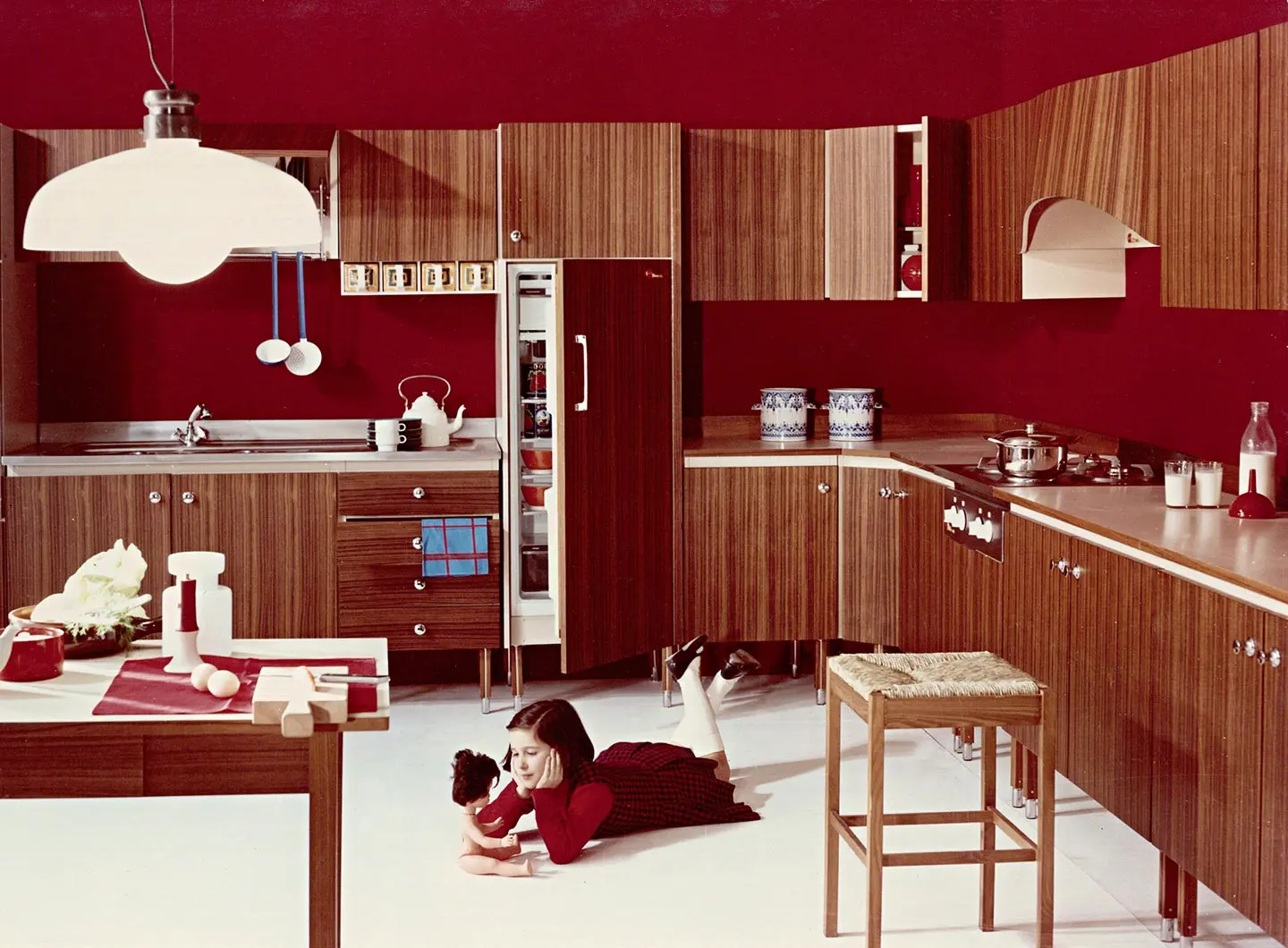
Claudia, design by A.& L. Fortuna, 1963
While kitchens were synonymous with home in the Sixties, by the Eighties they were seen as spaces to be shown off and were then cookery-driven in the Nineties, by the beginning of the new century, Arclinea had begun to conceive them as “co-living” spaces. The kitchen became the focal point of the home, with tables taking pride of place (preparation, study, reading, doing tasks, office work, eating meals), as sofas had once been. Kitchens became affective hubs, where families might cross paths or not, but where they left daily signs of belonging, places where the passion for cooking went hand-in-hand with the pleasure of eating together. Kitchens became open, organised spaces, with islands centre stage (space for food preparation, cooking and consumption), with large built-in wooden tables and adjacent but separate “closets” - walk-in, bespoke units dedicated to food washing and storage. Enclosed, spacious and made to measure, the kitchen determines not just the activities but the layout of the home. Islands, freed from their practical functions, become a conduit between the person doing the cooking and everyone else. Conviviality flows into cooking activities and vice versa, in a continuous interweaving of relations. The last two concepts designed by Citterio, Lignum et Lapis and Spatia, are themed islands that cater to different needs in terms of how the space and the functions are used – always the centre and the driver of the home, its containment and its operational spaces are thought out in architectural terms.
Now, 95 years on, Arclinea’s mission is still to come up with projects that will last through time, each capable of generating the perfect, longed-for kitchen, in which cooking becomes a genuine pleasure, that is totally customisable, complete with innovative technology and timeless creativity. A light, evocative space that lets the imagination run free, whilst remaining concrete, sincere, true to itself.
Since 2016 Arclinea is linked to B&B Italia through a strategic partnership based on the common values of design, innovation, quality. Since December 2018, the Group has been a part of Design Holding, the world’s largest European group in the high-end designer sector. Design Holding includes B&B Italia Group as well as leading lighting companies such as Flos and Louis Poulsen.


 Stories
Stories
